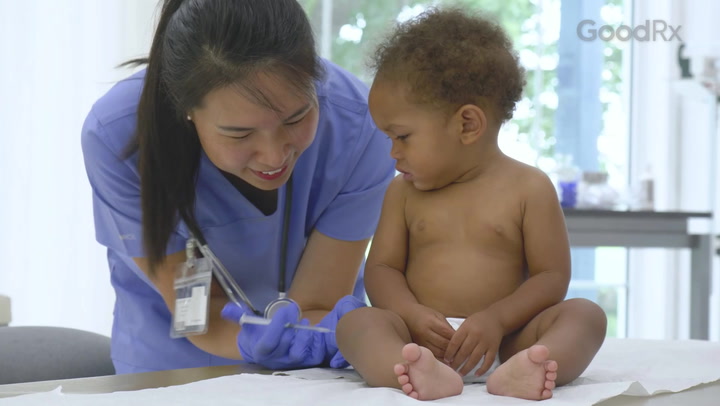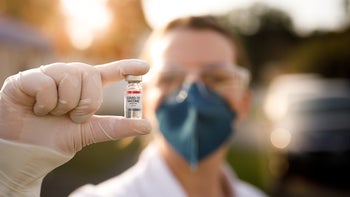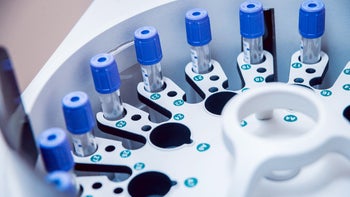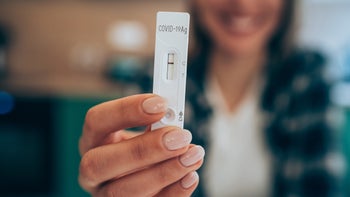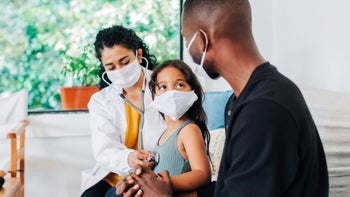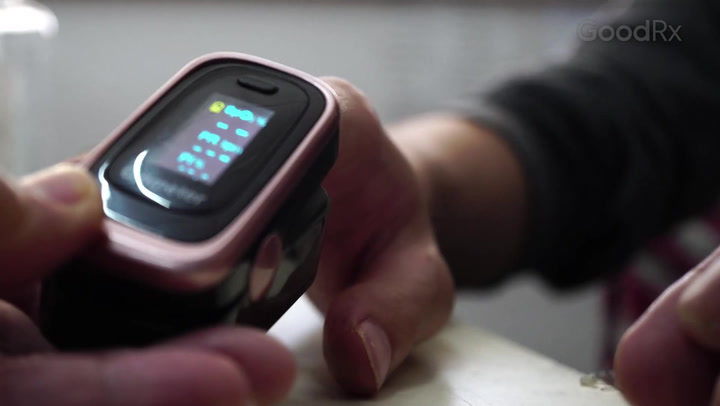
COVID and Diabetes: How COVID Increases Your Risk for Diabetes
COVID-19 infection can cause diabetes, and there’s growing evidence to support this link.
Emerging research continues to confirm the link between COVID infection and diabetes. COVID infection increases your risk of developing diabetes. And this is true for people of all ages, no matter their sex or race. But scientists aren’t exactly sure why this happens yet.
And it’s not just people who were hospitalized with COVID. The data shows that even in people who weren’t hospitalized, the risk is higher than in those who didn’t get COVID at all.
If you have had COVID, consider getting screened for diabetes. Watch for symptoms of diabetes, like increased thirst, increased urination, and weight loss.
 BEST ANSWER
BEST ANSWERThe research linking COVID and newly diagnosed diabetes is still emerging. The best available data support our answer, but questions and uncertainties remain. The science in this area may change in the near future.
19
21
19
21

You’ve probably heard that if someone has diabetes, they’re more at risk of developing severe symptoms and complications from COVID-19. But the relationship between COVID and diabetes is more complex than originally thought. And it goes in both directions. A growing body of evidence suggests that having COVID makes you more likely to develop diabetes.
Scientists aren’t exactly sure why this happens, but there are several theories. We’ll cover the latest research about the link between COVID and diabetes and what to watch for if you or a loved one has a COVID diagnosis.
COVID infection increases diabetes risk in adults
The link between COVID and diabetes was first observed in adults hospitalized with COVID. Data from China, Italy, and the U.S. from early in the pandemic found that adults with severe COVID had a higher-than-expected risk of developing new-onset diabetes during their hospital admission.
Search and compare options
A much larger study was published in 2022 and reviewed data from over 180,000 people from the U.S. Department of Veterans Affairs. This study found that:
The increased risk of diabetes isn’t limited to the short term. This study followed people starting 1 month after their COVID illness and for 12 months after. Over this time, people were 40% more likely to have a new diagnosis of Type 2 diabetes compared with people who did not have COVID infection.
The risk of diabetes increased even in people who were not hospitalized with COVID.
The risk of diabetes after COVID goes up in people who had a more severe COVID illness. So people who were hospitalized or admitted to an intensive care unit (ICU) had a much higher risk of testing positive for diabetes after their illness.
People older than 65, Black people, and those with cardiovascular disease, high blood pressure, high cholesterol levels, and prediabetes had a higher risk of diabetes after COVID illness.
The risk of diabetes also went up in people with larger body weights. The higher the BMI, the higher the risk.
But this study has a big limitation: Most of the people in it were white men. So researchers aren’t sure if these findings apply to other groups of people.
A 2023 study sheds more light on this question. Scientists looked at over 23,000 people who received care through the Cedars-Sinai Health System in California, over half of whom were women. They found that:
Getting COVID increased the chances of developing diabetes for both men and women.
Age and race didn’t affect the risk of developing diabetes after COVID.
Rates of high blood pressure and high cholesterol did not go up after COVID infection. In this study, rates of diabetes after COVID infection were not higher in people who had high blood pressure or high cholesterol. It’s not clear why this study had different findings than the earlier one. But it could be related to the specific population of people studied.
The risk of developing diabetes after COVID infection was higher for unvaccinated people than vaccinated people. But the link between vaccination and diabetes risk wasn’t statistically significant.
How does COVID increase your risk of diabetes?
Scientists aren’t exactly sure how a COVID infection might cause diabetes. But there are a few theories:
COVID may cause a direct attack on the pancreas — the organ that makes insulin.
Inflammation in the body during COVID may lead to high levels of blood glucose (sugar) and changes in the way the body processes glucose.
COVID may speed up Type 2 diabetes in people with undiagnosed prediabetes.
Some people might have “immunity-related genes” that make them more likely to get diabetes from COVID.
Changes in health during the pandemic — like weight gain and stress — may have made people more prone to developing diabetes.
How does COVID affect the pancreas?
The pancreas is an organ in the body that makes insulin. And insulin is a hormone that keeps your blood glucose levels in balance. When the pancreas doesn’t work properly, it can cause diabetes.
Scientists have found that SARS-CoV-2, the virus that causes COVID, can enter and damage the cells of the pancreas. Pancreatic cells have ACE inhibitors on them, and that seems to be how the virus can enter the cell. Once inside the cell, the virus can cause a series of reactions that harm the cell’s ability to create insulin.
Can COVID cause diabetes in children?
Cases of diabetes in children increased in many countries after the start of the COVID pandemic. But the link between COVID and diabetes seems to be more complex in children than adults.
The CDC published a large study that looked at over 80,000 children. They found that children with a COVID diagnosis had a higher chance of being diagnosed with diabetes more than 30 days after COVID diagnosis. And the increase was big: The risk of diabetes was close to three times higher in one database.
But even though cases of diabetes in children have gone up since the COVID pandemic began, it’s not entirely clear if COVID is the cause. More recent (and well-designed) studies from Denmark and Scotland did not find an increased risk of Type 1 diabetes in children after COVID infection.
There’s also some evidence that COVID infection increased risk for diabetes in children in the U.S. but not in Europe. Some researchers wonder if other pandemic-related factors — like weight gain or less exercise — are related to the rise in diabetes. More studies are needed to better understand the link between COVID and diabetes in children.
Does COVID infection lead to Type 1 or Type 2 diabetes?
It’s not clear if COVID mainly causes Type 1 diabetes, Type 2 diabetes, or possibly a new subset. Many of the studies looking at this link (including the large CDC study on children) haven’t distinguished between Type 1 and Type 2 diabetes. Some studies have focused just on Type 1 or Type 2 diabetes. And some studies on adults have found that there’s overlap in the symptoms people develop. So it’s not yet clear how to group diabetes caused by COVID.
Can all strains of COVID cause diabetes?
The latest evidence suggests that the risk for getting diabetes after COVID hasn’t changed since Omicron became the dominant strain. This suggests that, so far, all strains of COVID can cause diabetes. Further research will continue to shed light on this question as other COVID strains emerge.
If you’ve had COVID, what are signs that you may have developed diabetes?
Being aware of the link between COVID and diabetes can also help you watch for early signs of diabetes. Talk with your healthcare provider if you had a recent COVID diagnosis (especially if you were hospitalized) and you develop:
Frequent thirst
Frequent peeing
Blurry vision
Sleepiness
Weight loss
Nausea, vomiting, or stomach pain
Diabetes caused by COVID follows the same diagnosis process as regular diabetes. Usually, a diabetes diagnosis depends on a blood test that can detect a high blood glucose level. Sometimes, a urine test can also detect diabetes by measuring glucose in the urine. But you’ll need a blood test to confirm the diagnosis.
How can you avoid diabetes and other long-term health issues after COVID?
Researchers don’t know why some people develop long-term health issues after COVID and others don’t. Getting vaccinated is the best way to help prevent long-term health issues from COVID. That’s because vaccinated people are less likely to develop long COVID, even if they do get COVID. And people who are vaccinated for COVID have a smaller chance of developing diabetes after COVID than people who are unvaccinated.
Paxlovid (nirmatrelvir / ritonavir) is a treatment that lowers the risk of long COVID in people who are considered to have a high risk. Scientists don’t know if taking Paxlovid might help lower the odds of developing diabetes.
If you’re diagnosed with COVID and have any risk factors for serious disease, talk with your healthcare provider as soon as possible to see if prescription medication may help.
The bottom line
COVID infection can increase the chances of developing diabetes in adults. The evidence for this link in children is less clear. Scientists continue to learn about how this happens. But a growing body of evidence suggests that men and women are equally affected and that both Type 1 and Type 2 diabetes are possible after COVID infection.
Vaccination may lower a person’s risk for diabetes after COVID infection, similar to how it lowers the risk of long COVID. But there are still many questions about the link between diabetes after COVID, COVID vaccination, and treatments like Paxlovid.
Why trust our experts?


References
Ali, H., et al. (2023). Editorial: COVID-19 and diabetes, volume II. Frontiers in Endocrinology.
Barrett, C. E., et al. (2022). Risk for newly diagnosed diabetes >30 days after SARS-CoV-2 infection among persons aged <18 years — United States, March 1, 2020–June 28, 2021. Centers for Disease Control and Prevention, Morbidity and Mortality Weekly Report (MMWR).
Byambasuren, O., et al. (2023). Effect of covid-19 vaccination on long covid: Systematic review. British Medical Journal Medicine.
Cao, H., et al. (2023). Bidirectional causal associations between type 2 diabetes and COVID-19. Journal of Medical Virology.
Centers for Disease Control and Prevention. (2023). Diabetes symptoms.
D’Souza, D., et al. (2023). Incidence of diabetes in children and adolescents during the COVID-19 pandemic. Journal of the American Medical Association Network Open.
Denina, M., et al. (2022). Increase in newly diagnosed type 1 diabetes and serological evidence of recent SARS-CoV-2 infection: Is there a connection? Frontiers in Medicine.
Faruqi, J., et al. (2023). COVID-19 and diabetes mellitus: A review of the incidence, pathophysiology and management of diabetes during the pandemic. Expert Review of Endocrinology & Metabolism.
Johns Hopkins Medicine. (n.d.). The pancreas.
Kwan, A. C., et al. (2023). Association of COVID-19 vaccination with risk for incident diabetes after COVID-19 infection. Journal of the American Medical Association Network Open.
McKeigue, P. M., et al. (2023). Relation of incident type 1 diabetes to recent COVID-19 infection: cohort study using e-health record linkage in Scotland. Diabetes Care.
Memon, B., et al. (2021). ACE2 function in the pancreatic islet: Implications for relationship between SARS-CoV-2 and diabetes. Acta Physiologica.
Norrzae, R., et al. (2023). Risk of type 1 diabetes in children is not increased after SARS-CoV-2 infection: A nationwide prospective study in Denmark. Diabetes Care.
Pergolizzi, J., et al. (2023). Exploring the implications of new-onset diabetes in COVID-19: A narrative review. Cureus.
Rahmati, M., et al. (2023). New-onset type 1 diabetes in children and adolescents as postacute sequelae of SARS-CoV-2 infection: A systematic review and meta-analysis of cohort studies. Journal of Medical Virology.
Sathish, T., et al. (2020). Proportion of newly diagnosed diabetes in COVID-19 patients: A systematic review and meta-analysis. Diabetes, Obesity and Metabolism.
Sathish, T., et al. (2021). Potential metabolic and inflammatory pathways between COVID-19 and new-onset diabetes. Diabetes & Metabolism.
Xie, Y., et al. (2022). Risks and burdens of incident diabetes in long COVID: A cohort study. The Lancet: Diabetes & Endocrinology.
Xie, Y., et al. (2023). Association of treatment with nirmatrelvir and the risk of post–COVID-19 condition. Journal of the American Medical Association Internal Medicine.
Yang, L., et al. (2020). A human pluripotent stem cell-based platform to study SARS-CoV-2 tropism and model virus infection in human cells and organoids. Cell Stem Cell.


